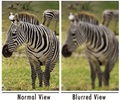
But experts have warned that amateur astronomers should not to try and see it too soon.
Rev Kate Kay, chief astronomer at the Norman Lockyer Observatory in Sidmouth, Devon, told the Independent that the comet is going around the sun, and there is always a danger that if people try to look at it when it is near the sun, their eyes could get damaged.
She said that they are hoping to get their first glimpses and photographs of it on Tuesday and Wednesday, when the comet is away from the sun, and near the new moon.
Kay asserted that if people look for the moon, just to the right of it, they may be able to see a little white smudge, hopefully with a tail.
She added that with any luck this bad weather may have improved by then, allowing young people with stronger eyes to see it, or older people to see it with binoculars.
Advertisement
Source-ANI









